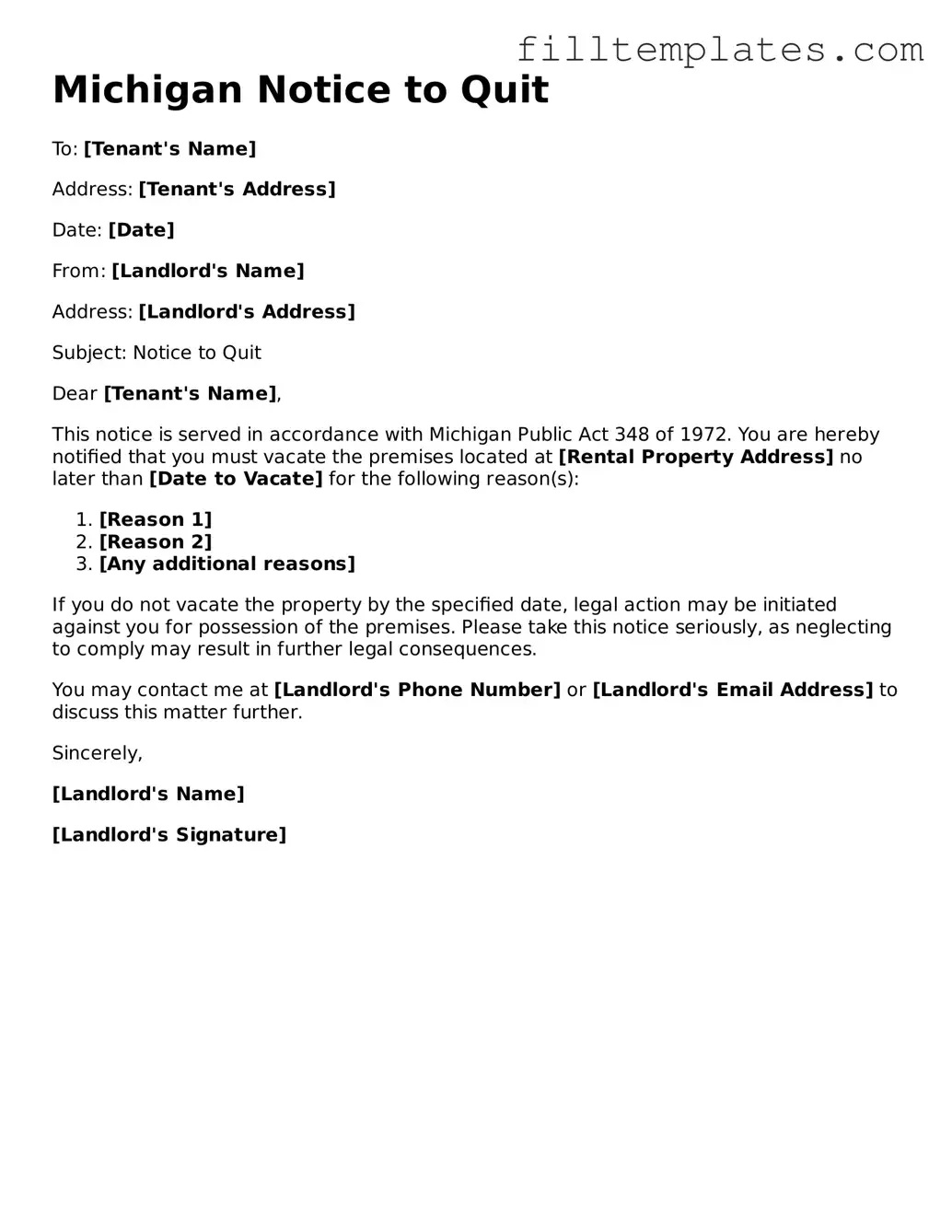Official Notice to Quit Template for the State of Michigan
The Michigan Notice to Quit form is a legal document that a landlord uses to inform a tenant that they must vacate the rental property. This notice serves as a formal request for the tenant to leave, often due to reasons such as non-payment of rent or lease violations. Understanding this form is essential for both landlords and tenants to ensure their rights are protected during the eviction process.
Open Notice to Quit Editor
